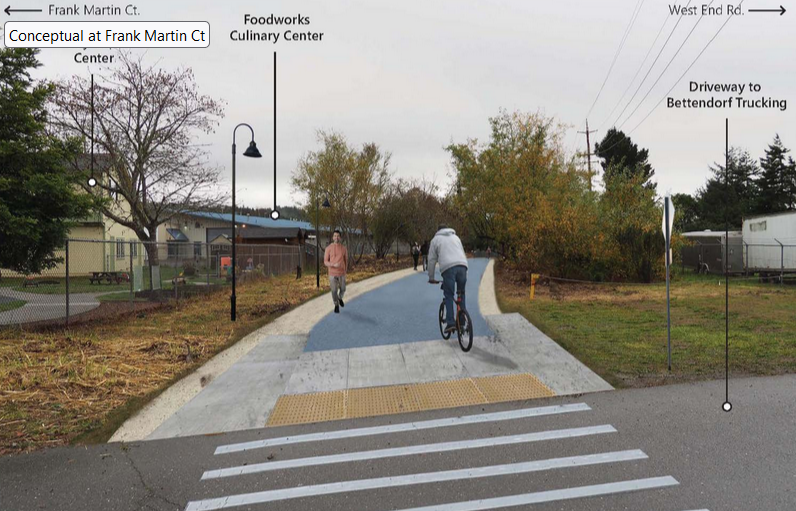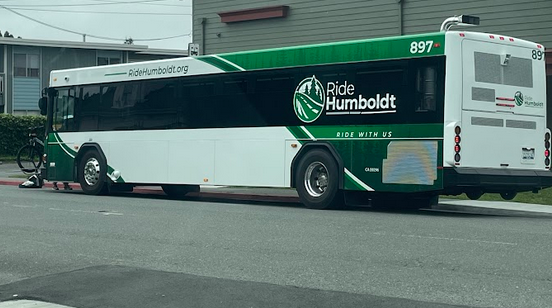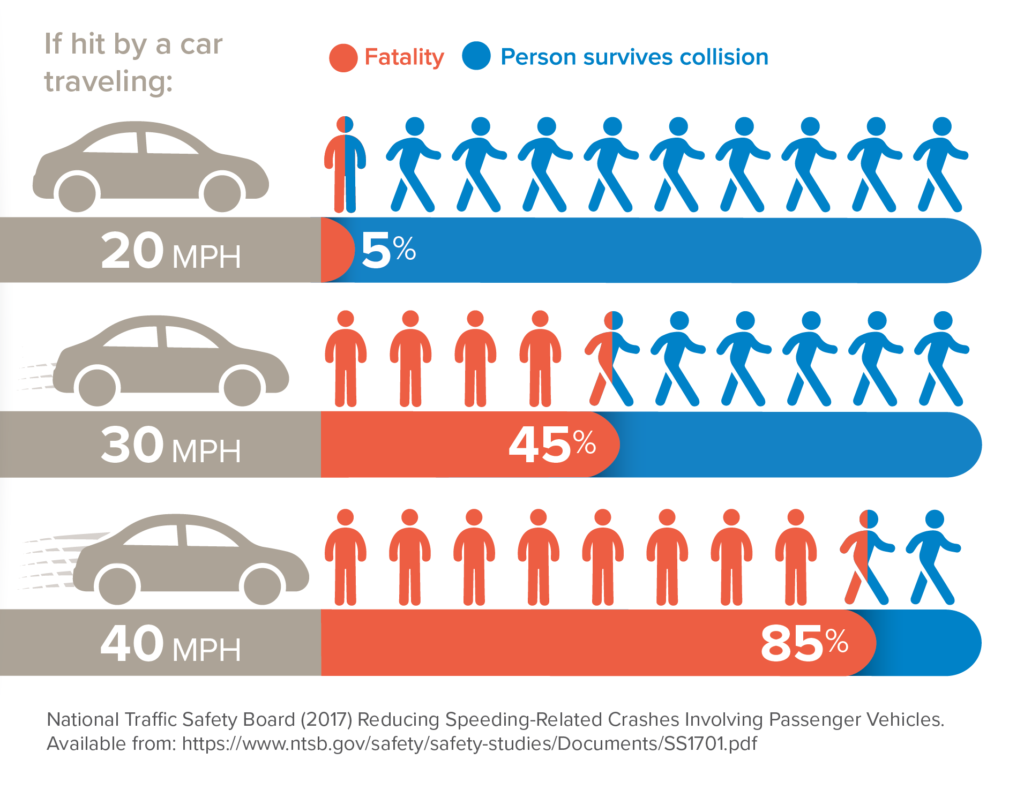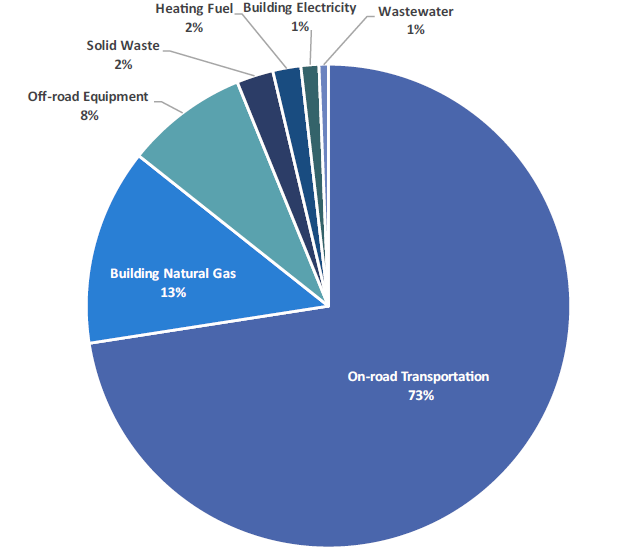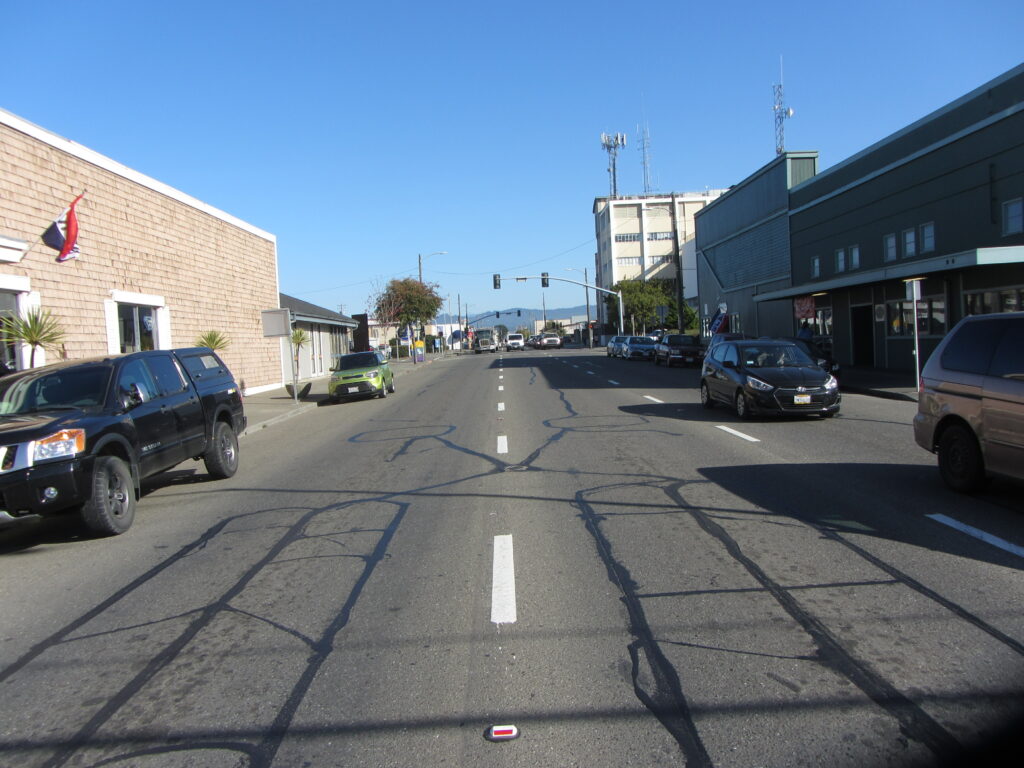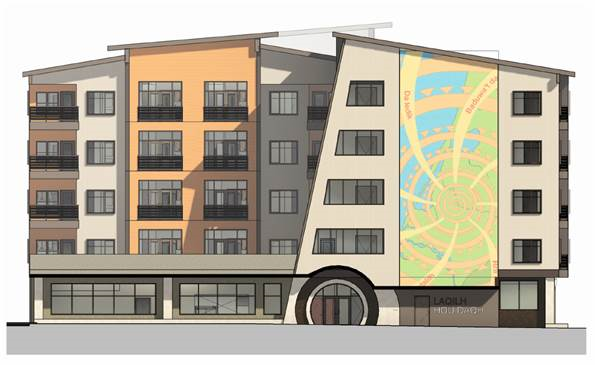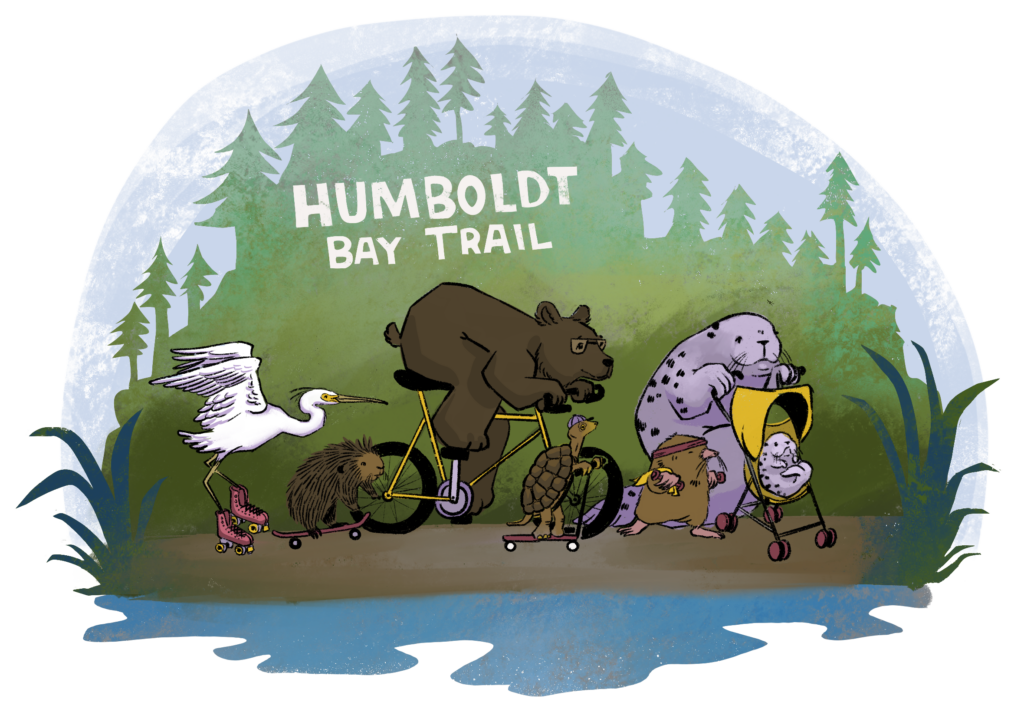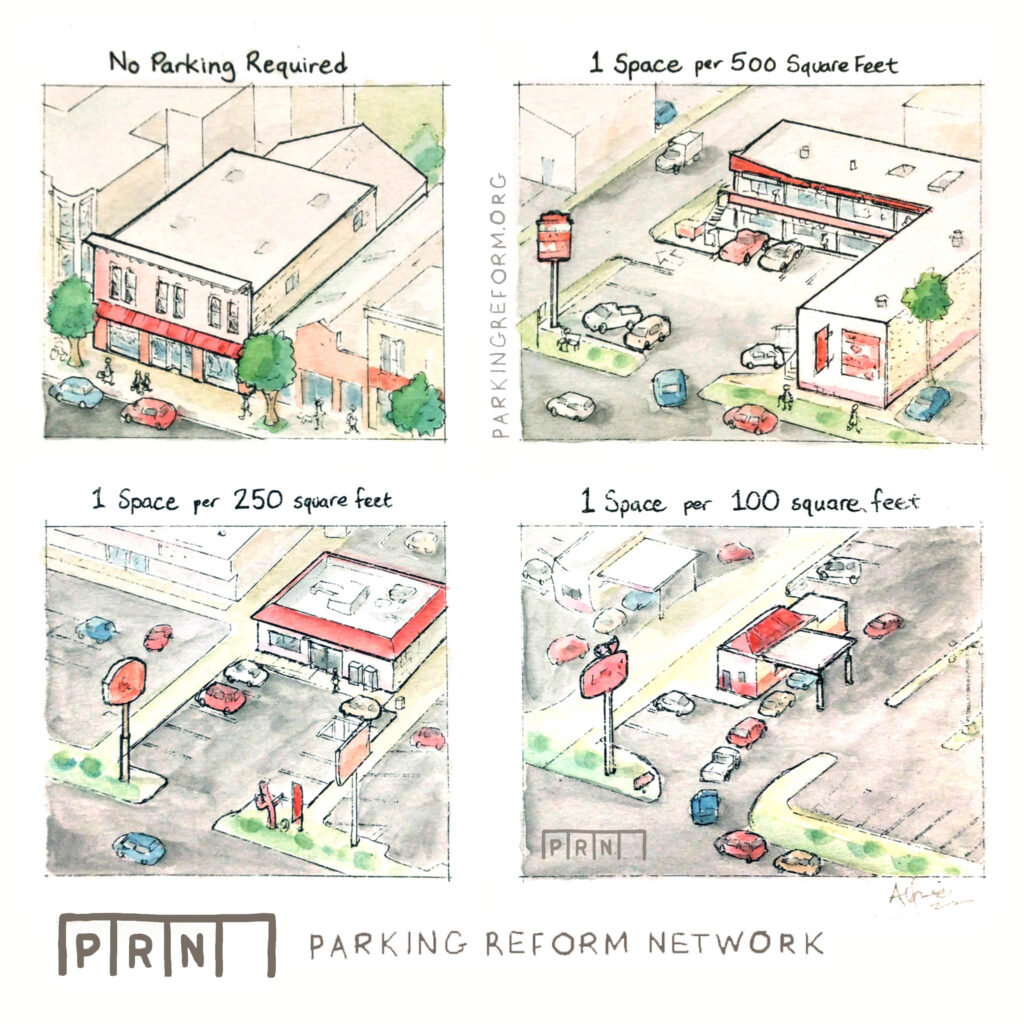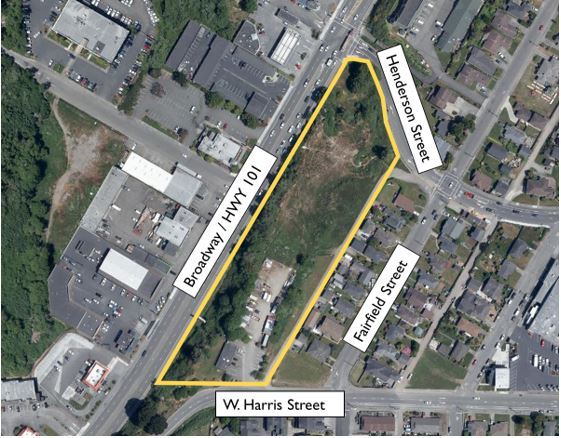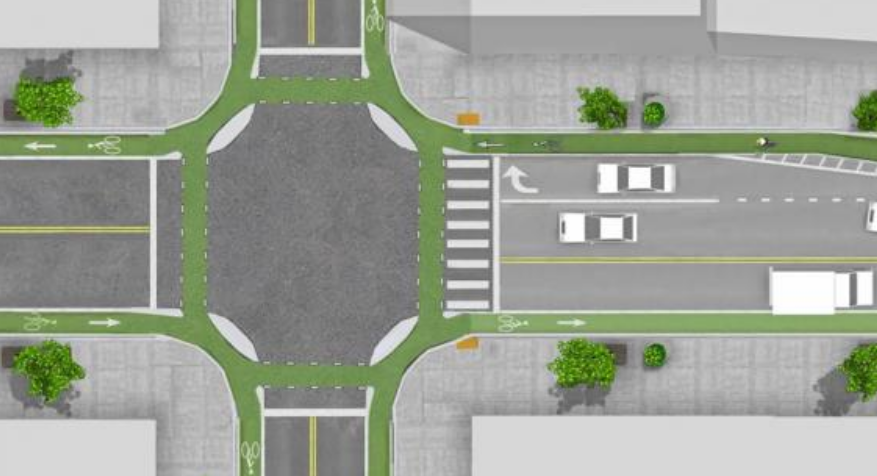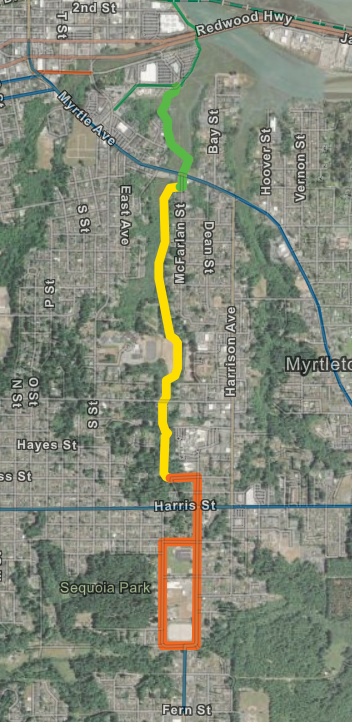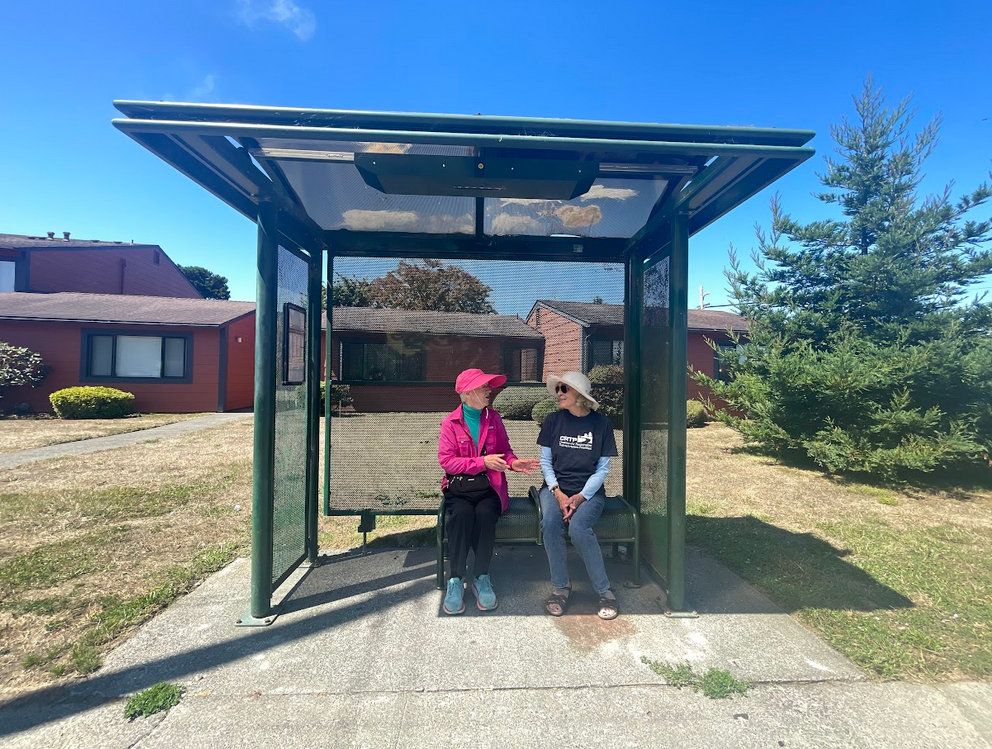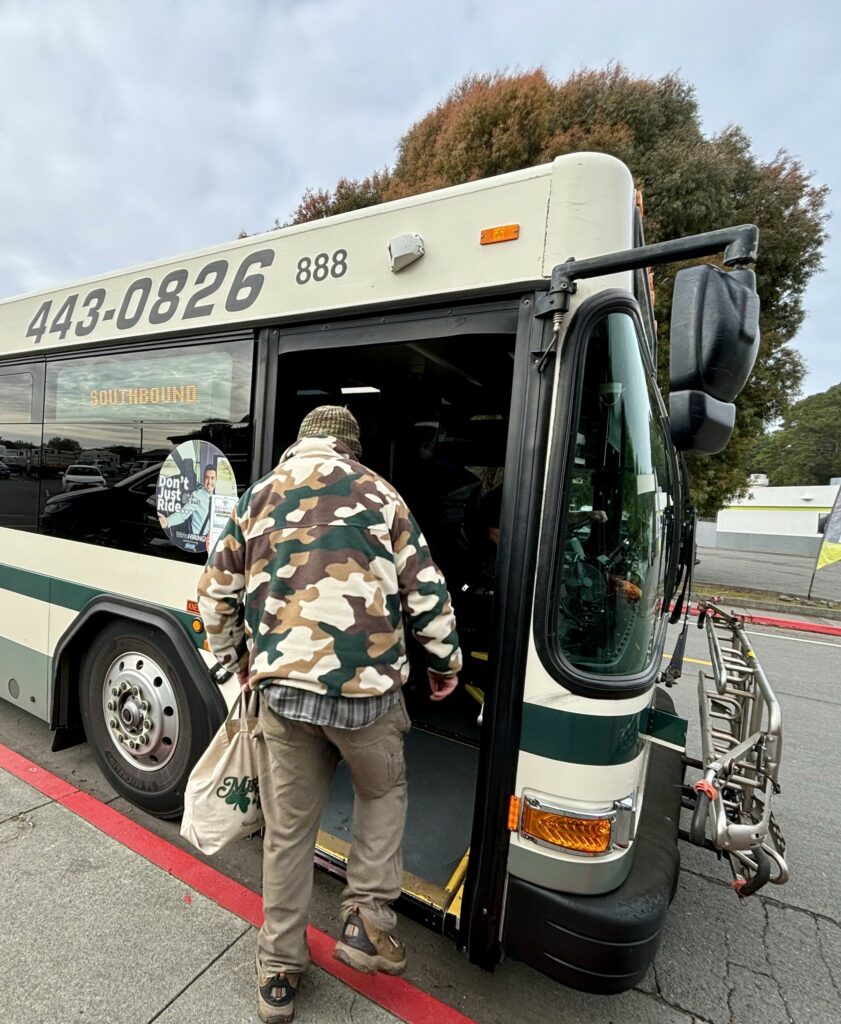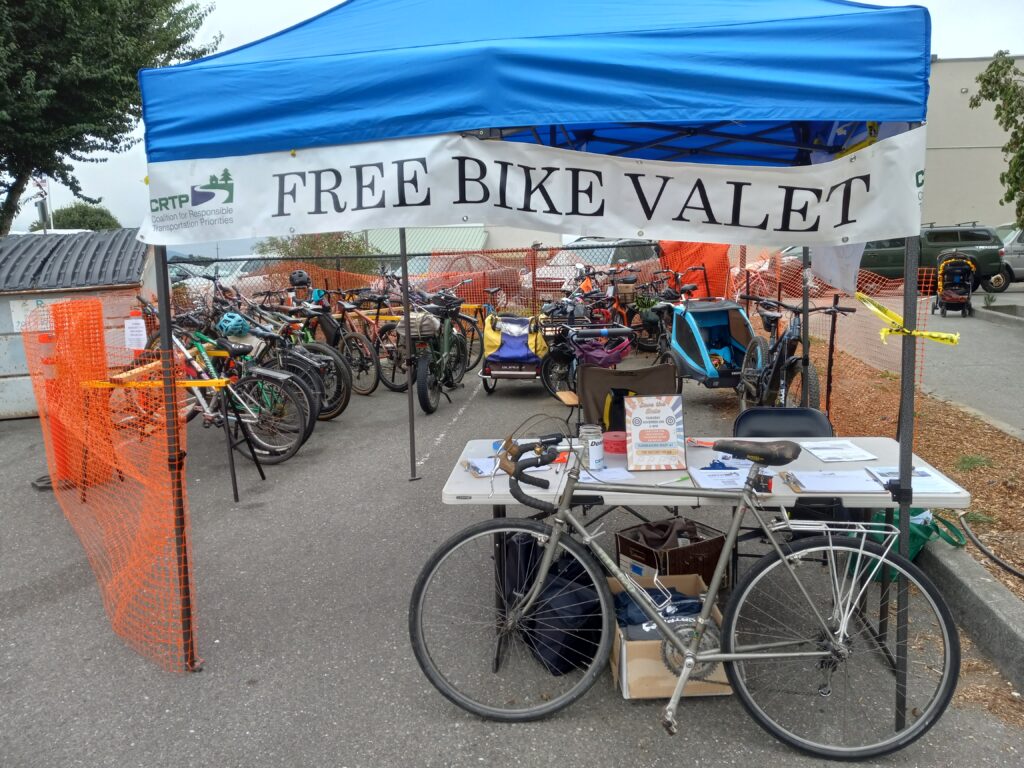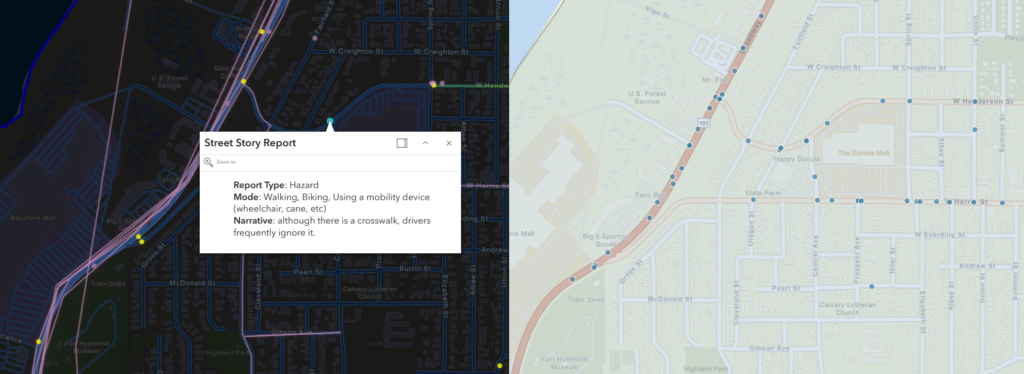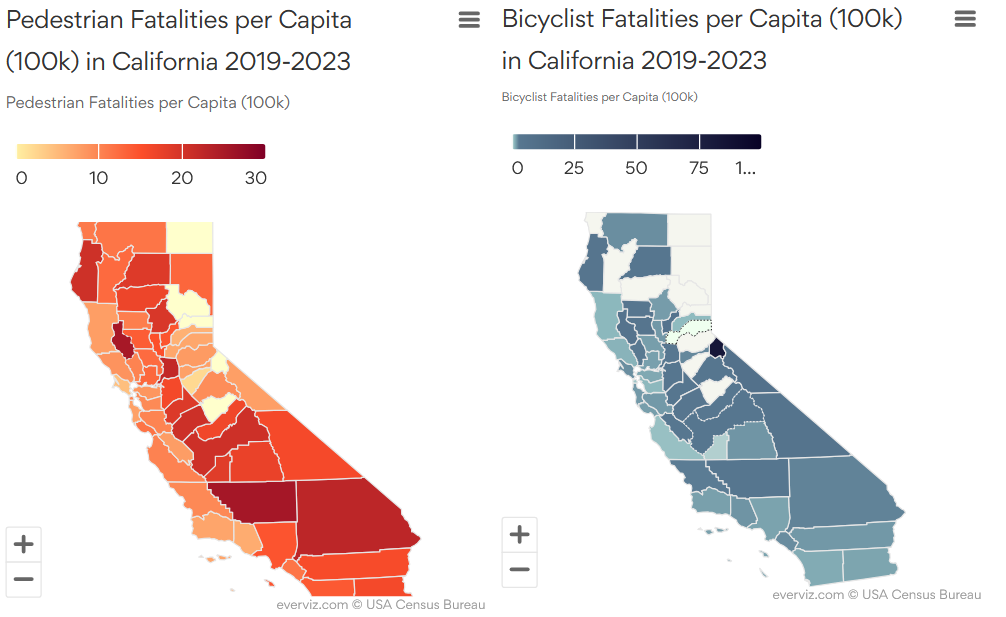The Collector
April 11, 2025
Arcata Trail & Student Housing Make Progress
The Lost Coast Outpost reports that housing for more than 600 students will be completed in time for the Fall 2025 semester as part of Cal Poly Humboldt’s Hinarr Hu Moulik housing project. Contrary to the Outpost’s reporting, the new housing is only about half a mile from campus by the shortest route – easy walking, rolling or biking distance for most students. It will also be served by nearby bus stops and a new university shuttle to campus. (We hope the university will re-think its plans to put a massive remote parking lot at the end of Foster Avenue, but if it goes through with those plans, the shuttle will go there too.)
The City of Arcata’s Annie & Mary Trail Connectivity project will go right by the Hinarr Hu Moulik housing, providing a direct path south toward campus – and connecting north all the way to Valley West and the first Mad River pump station. The new trail will be part of the much larger Great Redwood Trail, and next Wednesday the City Council is slated to approve an agreement with the Great Redwood Trail Agency to build and maintain it. The city is expected to begin construction on the trail this summer.
Unmet Transit Needs and Measure O
Next week, the Humboldt County Association of Governments (HCAOG) Board of Directors will vote to adopt the official annual report of unmet transit needs. The report is marked by a long list of unmet needs which the agency acknowledges are “reasonable to meet” but are unfunded, including: more frequent service, express service, Sunday service, and later night Saturday service on the Redwood Transit System; more frequent service and South Arcata and Bayside service in Arcata; expanded service in Myrtletown and Blue Lake; and later Southern Humboldt service.
Coincidentally, the very next item on the Board of Directors agenda is a discussion of how new transit funding from Measure O will be spent. The Board is likely to adopt eligibility rules that will result in Measure O transit funding being directed toward that official list of unmet needs. CRTP supports meeting all of those needs; but there are lots of other transit needs as well, and we don’t think it’s necessary to put new restrictions on this funding.
The bigger question, though, is how much money there will be to spend. Don’t forget to email the Supervisors and ask for at least 20% of Measure O revenues to go to transit!
News from Beyond the North Coast
Climate Funds Threatened by Both Trump and Newsom
President Trump has issued an executive order demanding that the US Attorney General investigate state and local climate programs across the country, with the goal of dismantling them. California’s climate cap-and-trade program is specifically called out and attacked in Trump’s order. The cap-and-trade program, while controversial for many reasons, brings in a lot of funding for climate action programs. Unfortunately, even while Trump is attacking the program, Governor Newsom is proposing to raid the very same climate funds to fund the state’s “Motor Vehicle Account.” The irony of using money meant to reduce climate pollution to instead support cars and drivers should not be lost on readers of The Collector.
New Round of E-Bike Vouchers Scheduled for Release
The first time around, the state ran out of e-bike vouchers – each worth up to $2,000 – almost immediately in the face of extremely high demand. This time is expected to be no different, but a new process will randomize recipients rather than relying on a first-come, first-served system. But you still have to be waiting online at 5 pm on April 29th for a chance to get one!
Trump Administration Changes Safety Funding Priorities
We’re glad the administration is releasing a new round of Safe Streets and Roads for All funding. (The first round, released under the Biden administration, is paying for a regional transportation safety plan in Humboldt County.) But we’re not so pleased with some of the changes which were made to the program, including penalizing projects that reduce vehicular capacity. Apparently safety is only a priority if it doesn’t inconvenience any drivers.
“Tesla Takedown” Protests Take Off
It has not escaped the notice of many Americans that the unelected billionaire systematically dismantling the federal government is also a car salesman.
The Collector is CRTP’s weekly transportation news roundup, published every Friday. We focus on North Coast news, but we also include relevant state, national and international transportation news – plus other items that we just find kind of interesting! To submit items for consideration, email colin@transportationpriorities.org.

